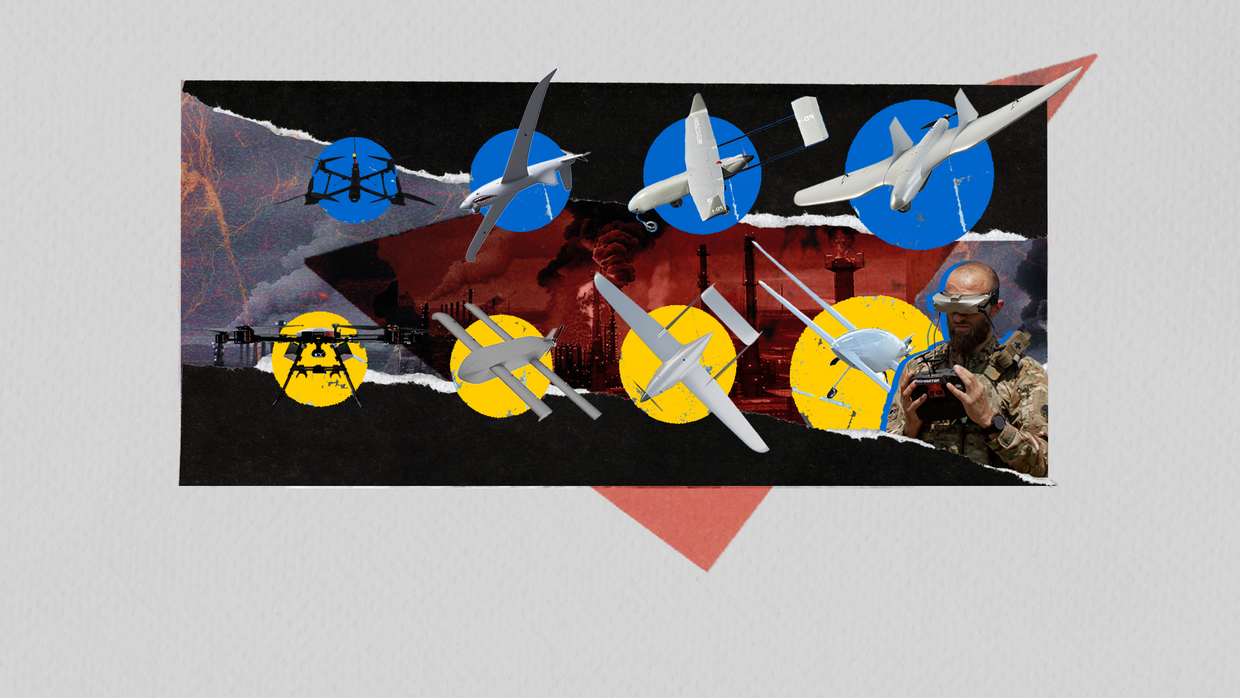You're wiped but wired. Your mind won’t stop spinning, and instead of drifting off, you're doomscrolling, stressing and counting down the hours until morning. Sound familiar?
If turning your brain off at night feels impossible, you’re not alone. You've probably heard all the usual sleep hygiene advice — stick to a bedtime, avoid screens, keep your room cool — but what if I told you that swapping your daily sun salutation for a moon salutation might just give you the zzz's you've been daydreaming about? I'm talking about bedtime yoga.
If you've ever taken a yoga class or practiced at home, you may have noticed how calm and quiet your mind felt after — and there's a good reason for that. Yoga helps ease that mental chatter and release built-up tension, making it a natural way to transition into rest mode.
But don't just jump into any yoga pose — some can actually give you an energy boost (hello, downward dog). Instead, yoga expert Brent Laffoon, founder and president of the Association of Yoga Professionals, says you should focus on poses that include reclined twists and passive hip openers to relax your mind and body. I'll share some poses below.
Read more: Find your center with the best yoga mat for 2025, tested and reviewed
How yoga helps you sleep better at night
If your body is exhausted at the end of the day but your mind won't slow down at bedtime, practicing yoga can help settle your thoughts and bring your nervous system into balance. And if your mind tends to stay in "fight or flight" mode where it's constantly preparing for stressful situations that haven't happened yet, yoga can help shift you into "rest and digest" mode so it's easier to fall asleep, Laffoon explains.
This mindfulness activity focuses your attention on attaching breath to movement, which is helpful in centering your thoughts and quieting your mind. Another benefit: focusing on your breathing can slow your heart rate and reduce stress hormones, signaling to your body that it's time to relax.
How to prepare for your yoga practice
If you're new to yoga, recovering from an injury or have physical limitations, it's important to listen to your body and never force a pose. Yoga is a practice and perfection is not the goal. Modifications can help you move safely and comfortably. Props like yoga blocks, straps and blankets can help with these modifications and provide support as you ease into positions. Blocks can bring the floor closer to you, making standing and seated poses more accessible while helping you find better alignment. A blanket can gently lift your hips or knees, while a yoga strap extends your reach, making poses more accessible. Yahoo's health editor Laura Williams notes that straps are especially helpful for deepening restorative poses and hip-opening stretches.
Read more: Better your balance with the best yoga blocks of 2024, tested and reviewed
Props like yoga blocks, straps and blankets can help prevent injuries and help you ease into a new practice. (Getty Images)
Five yoga poses to do before bed to promote better sleep
To help calm your mind and body at night, start with yoga poses that release the stress of the day and encourage relaxation. Reclined twists and passive hip openers can be especially grounding and Laffoon says they can have a calming effect on the mind. He recommends supta baddha konasana (reclining bound angle pose) and supta kapotasana (reclined pigeon pose) for releasing tension. Gentle, supported inversions like viparita karani (legs up the wall pose) or halasana (plow pose) are also great yoga poses to help you reset your body and mind before bed, he says.
Before you begin, it's always recommended that you warm your body up with a few neck and shoulder rolls, some cat-cow and a few minutes of child's pose.
You might just fall asleep in this pose if you close your eyes. (Getty Images)
1. Balsana (child's pose):
This is a pose my yoga instructor recommends, and it's an excellent start (and end) to any bedtime yoga practice. I often find any time I need to reset, whether it's during a tough workout or to relieve my lower back and hips from sitting in a chair all day, child's pose is one of my go-tos.
Start on your hands and knees, with your wrists aligned under your shoulders and your knees under your hips — you can open your knees wider than hip distance if you want a deeper stretch. Slowly sit back on your heels, hands still on the floor, arms straight and forehead touching the ground. Stretch your arms out in front of you with your palms facing down and let your body melt into the floor. Breathe deeply as you focus on lengthening your spine.
If needed, using a yoga block to support your forehead may make this pose more comfortable.
2. Supta baddha konasana (bound angle pose):
To get into the reclining bound angle pose, lie down flat on your back with your knees bent. From here, bring the soles of your feet together and slowly let your knees fall to the floor — it'll look like a butterfly stretch. Lay your arms out beside you, palms facing up or down (whatever your preference is) and focus on your breathing while you let the weight of the day melt away. Try staying in this position for a couple of minutes to start and work your way up to five minutes once you feel comfortable.
As a bonus, this is a really good stretch if you have tight hips or inner thighs from sitting at a desk all day. However, it can also be challenging if your muscles are tight, making it hard for your knees to relax. If you need assistance, place a yoga block under each knee for support.
3. Supta kapotasana (reclined pigeon):
The reclined pigeon pose is a gentle modification for regular pigeon pose — but the benefits are just as helpful. It's a great hip opener, can provide lower back relief and can even relax tight hamstrings.
To get into the pose, lie down on your back with your knees bent and feet planted on the floor. Place one ankle over your opposite thigh, just above your knee (for instance, your right ankle would be placed over your left thigh area). Gently press your hand into your (right) knee for a deeper stretch. If you want an even deeper stretch, place your hands under the leg that's grounded — in this example, the underside of your left thigh — and gently pull it and the leg over it closer to you.
Your head and neck should remain on the floor during this move, but if your flexibility doesn't allow for it, place a block or pillow under your head for extra support.
4. Viparita karani (legs up the wall):
Also known as the "legs up the wall" pose, this move explains itself. You'll get into position by sitting next to a wall and swinging your legs up so that your heels and hamstrings are resting on the wall. Your legs will be straight up on the wall while the rest of your body is flat on the ground. You can either let your arms fall out to the sides, palms facing up, or you can rest them on your stomach or chest. Stay in this position for at least a minute to start, but keep adding a little more time as you become a pro at the pose. You can also place a yoga block underneath your lower back for extra support.
Since this move involves elevating your legs, it promotes circulation and can release tension that's been built-up in your hips and lower back throughout the day.
5. Halasana (plow pose):
Plow pose is one of the more advanced yoga moves on this list, so you may need to stick with legs up the wall until you feel ready to move on to the next level. This pose is also a gentle inversion, but without the support of the wall (and your legs do go over your head — it’s not as crazy as it sounds). Once you've mastered legs on the wall, you can use the wall as support while you lift one or both legs off the wall. I do recommend getting help from an experienced yoga instructor when trying a more advanced move like plow pose to avoid any injuries.
When you're ready, here's how to get into the pose. Start by lying flat on your back, from your head all the way down to your feet. With your arms and palms pressing down, slowly bend your knees and lift your legs up over your head. Unbend your legs as they're overhead and let the tops of your toes touch the ground. Your arms should still be straight and planted onto the floor. Hold this pose for five breaths, then bend your knees and lift them up over your head, slowly lowering your lower back and legs back to the floor.
Child's pose is one of my favorite ways to release tension in my back and it's a good pose to warm up and cool down from your yoga session. (Getty Images)
How many times per week do you need to do these yoga poses?
Staying consistent with a bedtime yoga routine will only add to its benefits, and you can practice it every night if it feels right for you. However, Laffoon says it should never feel like a forced obligation, which might lead you to feeling more stressed, especially if you're short on time.
If every evening doesn't work for you, aim for three to five nights a week. Once you start to experience sleep benefits, you may decide it's worth carving out an extra 10 minutes (or more!) each night to do these yoga poses. It's up to you to find a routine that works best for you and modify it as you see fit.
If you're new to yoga, or even if you’ve just never done these specific poses, it may be wise to seek guidance from a yoga instructor to make sure you're maintaining proper posture. A yoga pro can correct your movements to help prevent injuries and to make sure you're getting the most out of each pose.
And if you are practicing on hardwood, laminate, tile, concrete or another type of hard flooring, invest in a good yoga mat. The yoga mats we like best provide ample cushioning and prevent you from slipping while in a pose.
Our health content is for informational purposes only and is not intended as professional medical advice. Consult a medical professional on questions about your health.
.png)
 German (DE)
German (DE)  English (US)
English (US)  Spanish (ES)
Spanish (ES)  French (FR)
French (FR)  Hindi (IN)
Hindi (IN)  Italian (IT)
Italian (IT)  Russian (RU)
Russian (RU) 




Comments